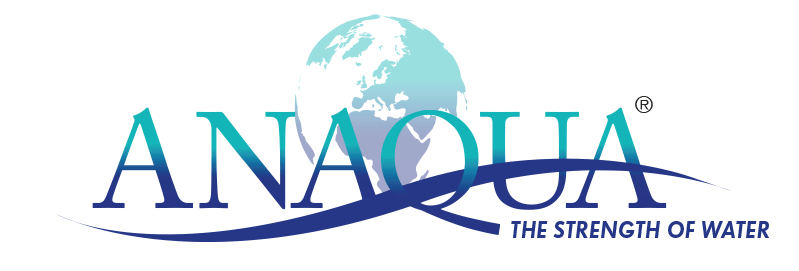













WHY NEUTRAL ANOLYTE SOLUTION ?
The analyzes show that the neutral anolyte has the advantages of all other disinfecting solutions but without their drawbacks: efficiency, safety, taste and smell, it impacts the equipment and water distribution systems, effect on the scale and biofilm, residual effects, easy use, maintenance and low cost.
The neutral anolyte is environmentally friendly and poses no risk to the environment, it becomes an excellent alternative for a regulation of microorganisms, instead of chemical solutions. Minimum inhibitory concentration (MIC) of the neutral anolyte and its antimicrobial properties against various microorganisms in suspension were assessed. The neutral anolyte diluted at 10% pure and the neutral anolyte gave 100% mortality of all organisms tested. Dilution with a 5% neutral anolyte gave a variable percentage of mortality of approximately 31% to 100%.
The neutral anolyte was compared with sodium hypochlorite (bleach) for the destruction of biofilm:
The anolyte neutral used in pure and diluted to 10% removes the biofilm while sodium hypochlorite is only efficient with a concentration of 20-60%.
The neutral anolyte is a naturally harmless disinfectant that can be used in most areas, including water distribution systems and industries to control biofilm, hospitals to minimize the risk of cross-contamination, the food industry to improve the quality of the product s and their shelf life.
COMPARISON WITH TRADITIONAL DISINFECTANTS
The table below presents and compares the properties of water disinfectants, currently available on the market:
DESCRIPTION
BENEFITS
LIMITATIONS
Sodium hypochlorite:
Liquid chlorine (bleach)
Chlorine dioxide:
Chloramine :
reaction of ammonium and chlorine
Used as a disinfectant prolonged activity. Removes odors taste. Prevents biofilm formation in distribution systems.
Low oxidant and disinfectant. Ineffective against viruses and cysts. Large doses and prolonged contact time required for disinfection. Dangerous for patients using dialyzers because it is able to penetrate the dialysis membrane and affect erythrocytes. Form byproducts containing nitrogen.
Ventilation in the production room is highly recommended.
The increase in the number of bacteria resistant to most antibiotics or biocides in common use is a problem that many industries and industries and municipalities are facing. Bacteria are becoming increasingly resistant to biocides and the control of biofilms becomes increasingly difficult.
A high amount of biocides is used and this has negative impacts on the environment, as biocides are toxic to humans, they are carcinogenic, corrosive and cause bad smells. The neutral anolyte becomes the alternative for the control of microorganisms.
In addition, the neutral anolyte applied daily for more than ten years has shown that microorganisms are prevented over time.
Chlorine gas:
Requires stringent safety measures
Disinfectant and efficient oxidant. Eliminates odors and tastes. Capable of controlling algal growth and biofilm. Decomposes organic contaminants such as phenols.
Chance in transportation and storage. Toxic. Risks associated with the handling and risk of overdose.
Can be produced on site so no transportation problems. Effective against most pathogens.
Danger emanation of chlorine gas during storage. Ineffective against cysts (Giardia sp., Cryptosporidium sp.). Leave a taste to the water. Form trihalomethanes and chloramines. Toxic. Risks associated with the handling and risk of overdose.
Production only locally. Disinfectant containing the most effective chlorine. Effective against microorganisms even at low doses. Does not form chloramine. Does not facilitate the formation of trihalomethanes.
Formation of toxic byproducts (chlorate and chlorite). Risk of overdose.
Ozone :
is no longer used in France
Very effective action disinfection and oxidation. Removes the taste and odor. Does not form chlorinated compounds containing trihalomethanes.
Form a large number of by-products requiring the use of bio-active filters. Has no residual effects. Expensive equipment.
Ultraviolet: UV radiation on microorganism
Eradication of much pathogens. No transport products. No formation of byproducts.
No residual effect. Ineffective on cysts. High cost for equipment and maintenance. Disturbed by turbidity (organic load) water disinfection: Generates a power that can cause a variation of the wavelength variation.
Hydrogen peroxide:
ANAQUA:
Electrochemical activation of a brine solution in a membrane electrolyzer.
Effective against most microorganisms
Environmentally friendly and safe
Powerful agent for disinfection and oxidation. Effective against all types of bacteria, viruses, fungi and spores. Removes the biofilm. Removes the taste and odor. No formation of toxic byproducts. Noncorrosive. Cheap. No problems with transport or storage. No handling related dangers. No acute or chronic toxicity.
Problem related to the transport and storage
No in situ production
Less active at neutral pH
Corrosive
Little ecological and economic production
ANAQUA solutions: